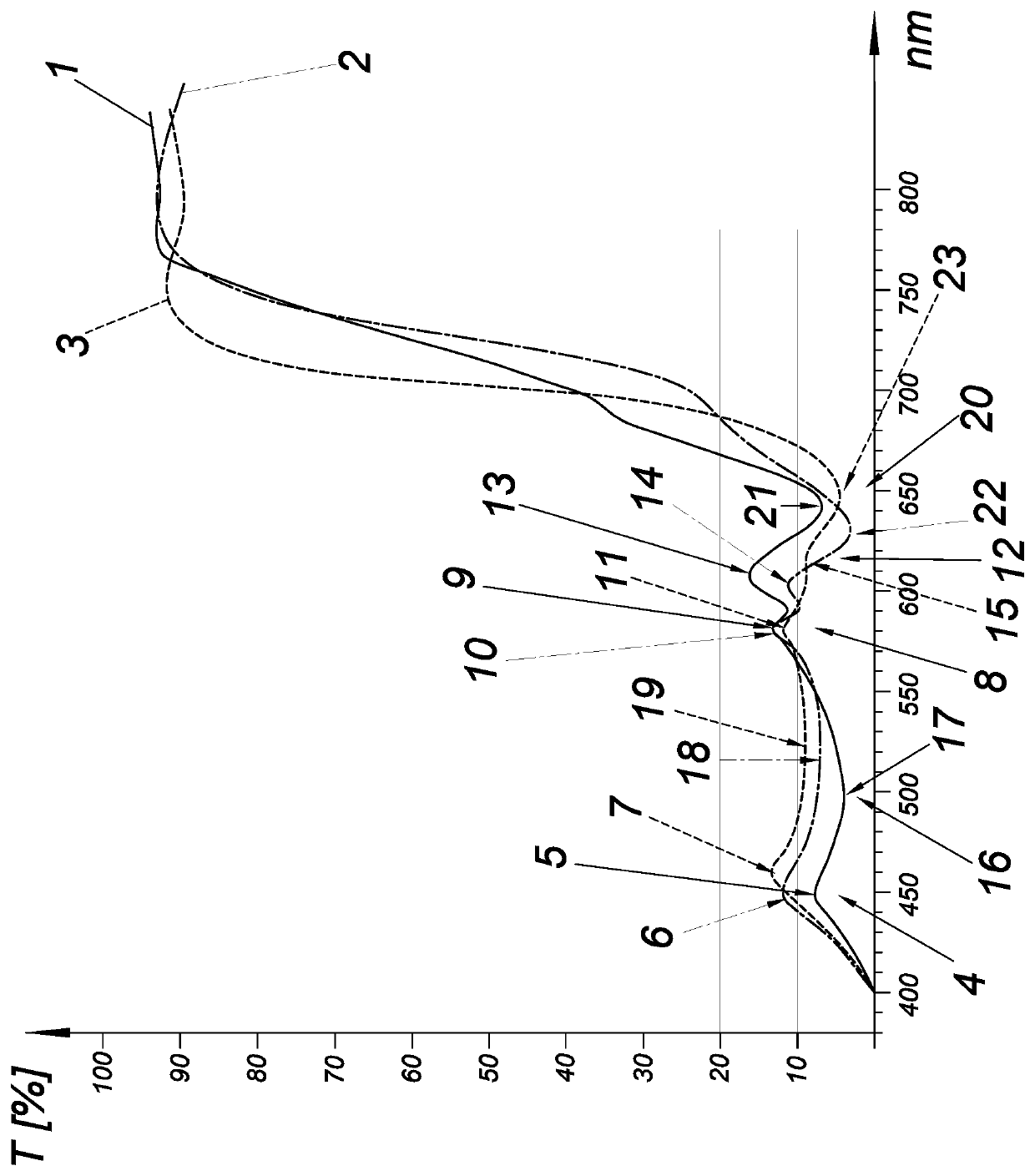Optical filter for sunglasses
- Summary
- Abstract
- Description
- Claims
- Application Information
AI Technical Summary
Benefits of technology
Problems solved by technology
Method used
Image
Examples
Embodiment Construction
[0012]According to embodiments of the system described herein, optical filters—each having different tints—have transmission spectra 1, 2, and 3. In this case, the transmission spectrum 1, for example, describes the percentage curve of the transmittance T in the light wavelength range from 380 nm to 800 nm of an optical filter having brown tint according to embodiments of the system described herein. Accordingly, according to embodiments of the system described herein, the transmission spectrum 2 may be associated with an optical filter having gray tint, and the transmission spectrum 3 with an optical filter having green tint.
[0013]The transmission spectra 1, 2, and 3 each may have a local transmission maximum 5, 6, or 7, respectively, in the light wavelength range 4 between 440 nm and 470 nm, and each may have a local transmission maximum 9, 10, or 11, respectively, in the light wavelength range 8 between 570 nm and 590 nm. Moreover, in the light wavelength range 12 between 600 nm ...
PUM
 Login to View More
Login to View More Abstract
Description
Claims
Application Information
 Login to View More
Login to View More - R&D
- Intellectual Property
- Life Sciences
- Materials
- Tech Scout
- Unparalleled Data Quality
- Higher Quality Content
- 60% Fewer Hallucinations
Browse by: Latest US Patents, China's latest patents, Technical Efficacy Thesaurus, Application Domain, Technology Topic, Popular Technical Reports.
© 2025 PatSnap. All rights reserved.Legal|Privacy policy|Modern Slavery Act Transparency Statement|Sitemap|About US| Contact US: help@patsnap.com

